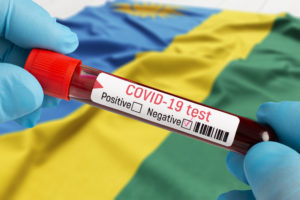The engineers’ code of ethics requires us to “hold paramount the safety, health, and welfare of the public“. Here’s one way public health officials use statistics to do just that. You probably studied statistics as an undergraduate. Even so, one term that may be new to you is “pooled sample”. But when there’s not enough testing capacity, pooling can help make the most of it.
Sample pooling has been in the news because the Food and Drug Administration (FDA) has approved it for COVID-19 testing. The FDA allows as many as four individual samples in one test. It may help our testing to catch up to the pace of the virus’ spread.
What is a pooled sample?
Sample pooling is an important public health tool because it allows for more people to be tested quickly using fewer testing resources. Sample pooling does this by allowing multiple people – in this case four individuals – to be tested at once. The samples collected from these four individuals are then tested in a pool or “batch” using one test … If the pool is positive, it means that one or more of the individuals tested in that pool may be infected, so each of the samples … [is] tested again individually. –FDA news release, July 18, 2020
How many samples go into a pool depends on the resources available and how many positive results you anticipate. If people come to a hospital complaining of COVID-like symptoms, pooling may not be appropriate. But if you’re testing a large group of apparently healthy people, pooling makes sense.
Pooling samples helps Rwanda keep COVID-19 in check
Rwanda is making clever use of its resources against COVID-19. The strategy involves testing a large proportion of the population. Essentially, they stop people on the street to test them. That means a high percentage of negative results.
It costs the government between $50 and $100 to run a single coronavirus test … In order to test thousands a day, Rwanda has started using a process called “pool testing.” Material from 20-25 nasal swabs are all put into one vial and run through the machine. This allows them to test far more samples at once.–“Why Rwanda is doing better than Ohio when it comes to controlling COVID-19”, NPR, July 20, 2020

The pooled sample is tested first, followed by further tests if it tests positive. Performing individual tests in sequence could prove both time-consuming and costly. However, Rwandan scientists want speed as well as low cost. After all, people need to know right away if they have to quarantine themselves.
So public health workers divide each individual’s swab. The first round of testing includes all of the individuals. If the result is negative, none of them has the virus. If it’s positive, each individual’s swab becomes part of additional pooled samples for subsequent rounds of testing. The algorithm allows the public health worker to quickly identify who has the virus and notify them right away. Where “hot spots” appear, additional interventions may be necessary. The algorithm permits widespread screening and rapid detection–at a manageable cost.
As of August 3, Rwanda has had a total of 2062 cases of COVID-19. Ohio, with a comparable population size, is reporting 1280 new cases per day. And Ohio, which has managed the pandemic well by US standards, is not a “hot spot”.
